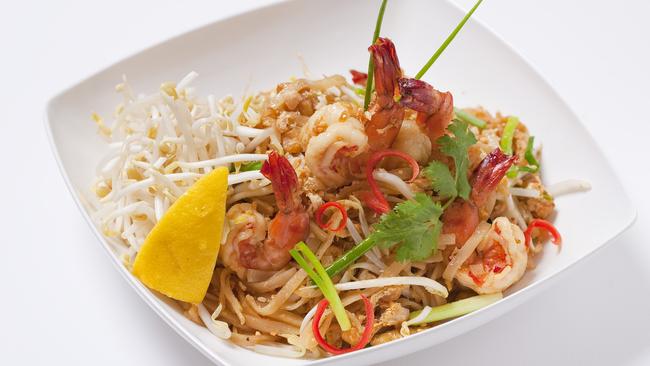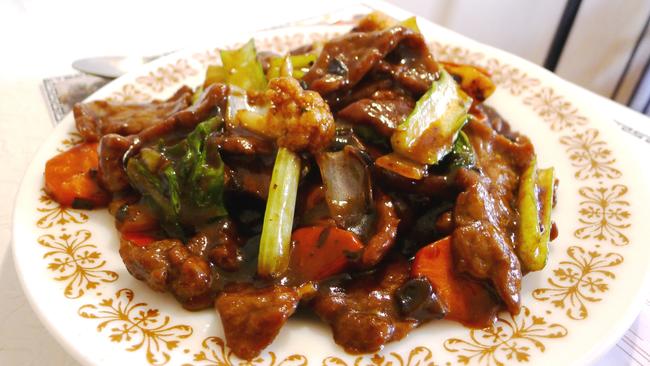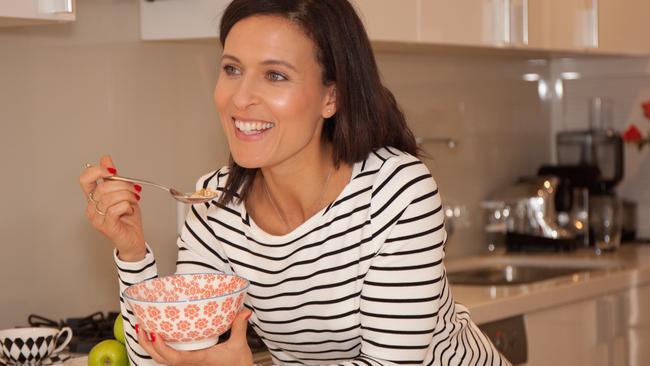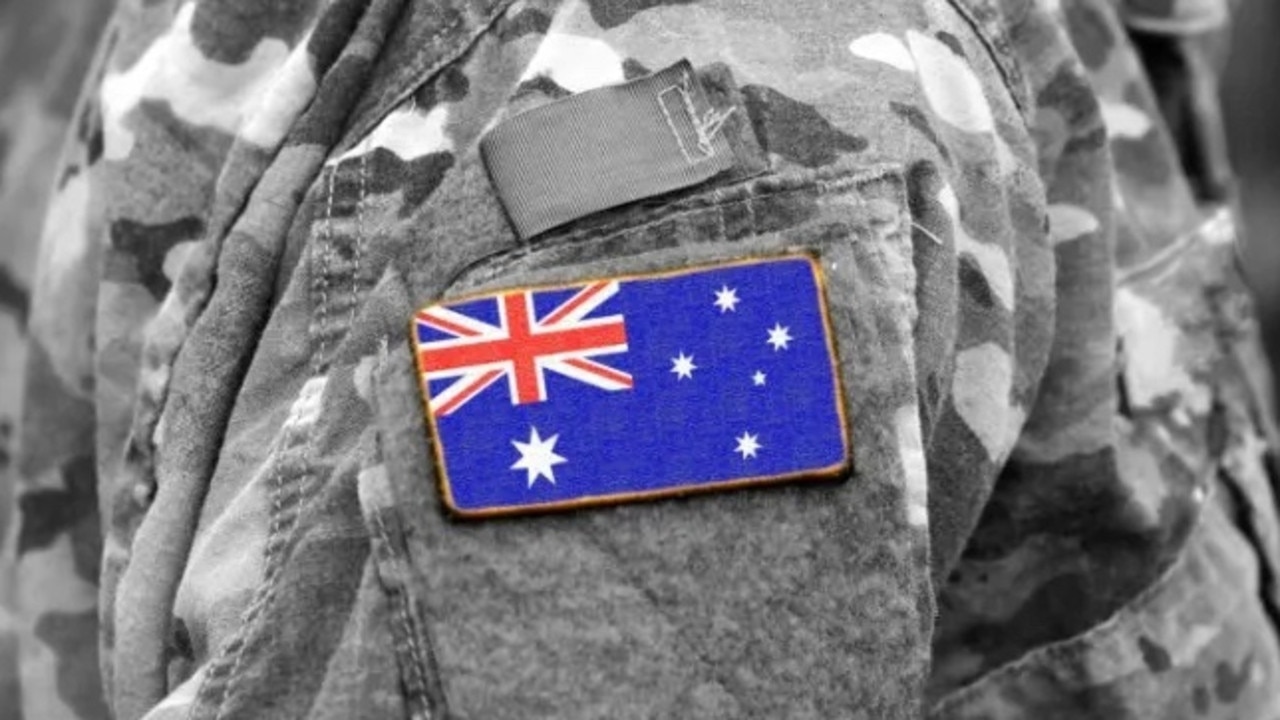Takeaway food options you didn’t know were healthy
GOOD news: Those takeaway meals you always feel guilty for ordering might not be that bad for you. Even Pad Thai gets a good wrap from this nutritionist.

Health
Don't miss out on the headlines from Health. Followed categories will be added to My News.
“LET’S just get takeaway” is a common phrase Aussies are saying, on average, 2.5 times a week. But with the usual salt, hidden sugar and grease laden options, can takeaway food really be integrated into a balanced diet?
Rest assured. Whether you love Chinese, Indian or Thai, you don’t have to sacrifice health for convenience. There are surprisingly healthier dishes in most cuisines — it’s just a matter of knowing what to choose.
Menulog, a popular online and mobile takeaway, has partnered with Nutritionist Dr Joanna McMillan, to launch the Healthy+ program designed to help diners identify healthier options.
Guidelines developed by Dr Joanna have been used to analyse various restaurants with a surprising 40 per cent of dishes (normally perceived as unhealthy) receiving the tick of approval, proving Australians have been left in the dark with the lack of nutritional information available for ordered food.
Here’s the top six takeaway choices

GARLIC PRAWNS
Prawns are a lean source of protein-rich food that provides beneficial omega-3 fats and several nutrients including the mineral selenium and iron.
Best choice: Sautéed prawns teamed with a vegie-rich stir-fry and a serving of rice makes for a winning meal. Just ask to go easy on the butter.
PAD THAI
Noodles tend to have a lower GI than most white rice, so have less effect on blood sugar levels.
Best choice: To save on kilojoules, share the main course and simply team with a green salad or stir-fry veg for a balanced meal. If you have the choice to pick your noodle selection, opt for the egg-based or soba noodles as these have the lowest GI.
BEEF AND BLACK BEAN SAUCE
This dish can be a great choice if it uses lean beef and includes plenty of veggies. “The black bean sauce is made from fermented black beans which have terrific benefits for the gut” adds Joanna.
Best choice: To avoid the carb overload, stick with one cup of cooked rice per meal and fill up on vegetables, such as stir-fried greens (broccoli/spinach) or clear-based veggie soup.
BEEF MASALA
A traditional Masala is made with tomato-base sauces, rather than creamy ones and uses a slow-cooked method which generally use less oil.
Best choice: Bundle up with a side of veg or high-fibre dal if not many in the meat curry.
ROGAN JOSH
Made from scratch, traditional Rogan Josh is packed with antioxidant rich spices.
Best choice: Choose ones made with heart-healthy unsaturated oils, such as mustard oil or olive oil, instead of the usual ghee (clarified butter) or cream-based curries, which are high in saturated fat. Opt for wholegrain pita breads or rotis as opposed to breads made with white flour.
PASTA DISHES
Pasta as an unhealthy choice is a common misconception. Provided you watch your portion size, pasta is low GI and is much higher in protein than rice. So you’ll be satisfied on less.
Best choice: Choose tomato-based sauces (eg: Napoli and Pollo) cooked in olive oil to boost the uptake of antioxidant-rich lycopene from the tomatoes. Look for additional protein such as chicken or seafood, and add a side salad (instead of garlic bread) to avoid excessive amounts of carbohydrates.

FOUR STEPS TO BUILD A BETTER PLATE
1. Half-fill your plate with non-starchy veggies. These provide volume and filling power for not many kilojoules, plus packed with an array of nutrients and fibre our bodies need.
2. Opt for lean sources of protein. A fist full is all you need. Choose skinless chicken, turkey and duck, lean cuts of pork, lamb, beef or game meats, seafood, eggs, tofu or legumes mixed with chopped nuts.
3. Choose smart carbs. These are nutrient-rich, minimally processed foods which are slowly absorbed (low GI) to keep you satisfied. Examples include basmati rice, wholegrain and white pasta, barley, wholegrain couscous, quinoa, wholegrain breads (wholemeal roti, pita, tortilla) and legumes.
4. Add heart-healthy fats: avocado, nuts and seeds (pumpkin, sunflower, sesame, poppy, chia or flaxseed), or food cooked or dressed in extra virgin olive oil (preferred choice). Peanut oil or canola oil or rice bran oil are also acceptable options.
TAKEOUT TIPS:
Stick to the right ratio. Arrange your plate for 50 per cent fresh or cooked vegetables, 25 per cent lean protein and 25 per cent smart carbs. These make for a balanced meal.
Portions distortion
Serve sizes are usually much larger than what would customarily be eaten at home. Share dishes wherever possible. If flying solo, you can always consider a leftover lunch the following day.
Like a side with that? If protein-rich meals lack vegetables, always order a vegie-rich side dish or prepare your own at home.

Don’t’ hesitate. Ask the restaurants if they can add less salt, additives and sugar, and inquire about cooking oils. Avoid takeaways that use oils high in saturated fat, such as coconut or palm oil, and stick with those that use canola or olive oil.
Cooking methods. Choose steamed or grilled dishes over fried varieties to lower the trans and saturated fats.

Kathleen Alleaume is a nutritionist and founder of The Right Balance
Originally published as Takeaway food options you didn’t know were healthy






